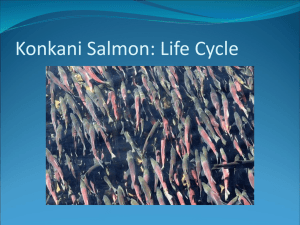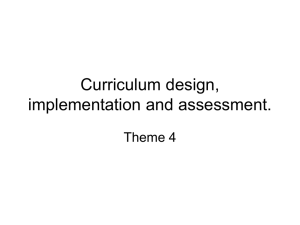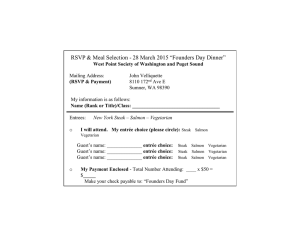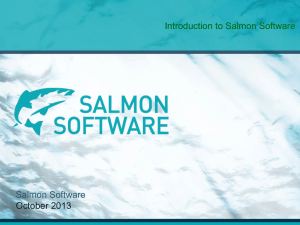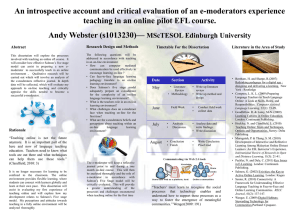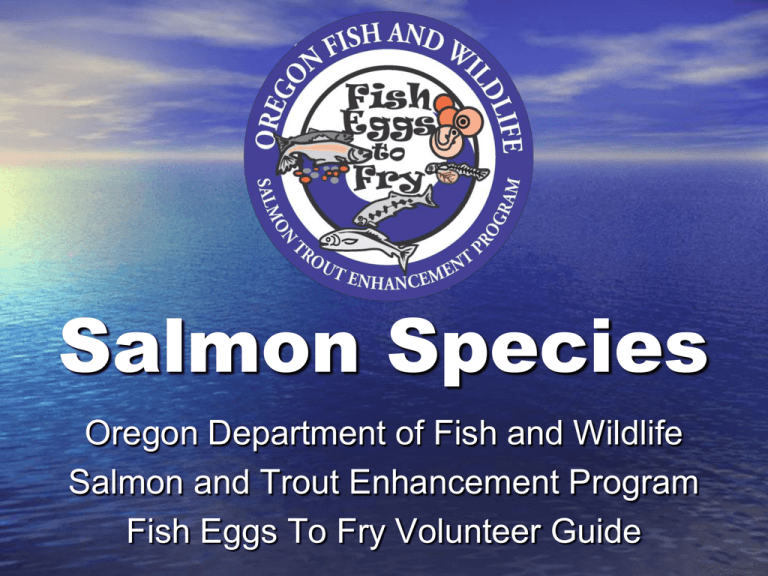
Salmon Species
Oregon Department of Fish and Wildlife
Salmon and Trout Enhancement Program
Fish Eggs To Fry Volunteer Guide
Chinook Salmon
Scientific Name:
Oncorhynchus tshawytscha
Other Names:
King Salmon, Tyee Salmon
Identification:
- Silvery sides, gray back
- Maroon/brown when spawning
- Spots on back
- Spots on both tail lobes
- Black mouth and gums
- Adults weigh 10-40 lbs
Adult
Fry
Smolt
Life History:
- Spring/Summer and fall runs
- Fry in streams 3 mo – 1+ yrs
- Smolts in estuary less than yr
- Adults in ocean 2-5 yrs
- Spawn in large and small rivers
Chinook Salmon
Habitat and Range
Chinook salmon
range from central
California north to
Alaska, the Arctic
Ocean and Russian
Far East.
These are the most
sought after food
salmon for their
high quality of
flesh.
Map courtesy Ecotrust
In freshwater they
prefer mainstem
large and small
rivers.
Coho Salmon
Scientific name:
Oncorhynchus kisutch
Other names:
Silver salmon
Identification:
- Silvery sides, green blue back
- Maroon color when spawning
- Small black spots on back
- Spots on upper tail fin only
- Black mouth with white gums
- Adults weigh 5 – 20 lbs
Adult
Fry
Smolt
Life History:
- Late fall, early winter spawning run
- Fry in streams 1+ yrs
- Smolts in estuary a few days
- Adults in ocean 2 yrs
- Spawn in smaller streams and rivers
Coho Salmon
Habitat and Range
Coho salmon
range from
central California
north to Alaska,
and Russian Far
East.
Coho are also
known as silver
salmon.
Map courtesy Ecotrust
In freshwater
they prefer
smaller rivers
and tributary
streams.
Sockeye Salmon
Scientific Name:
Oncorhynchus nerka
Other Names:
Red salmon, Blueback
Identification:
- dark, blue-black back, silver sides
- Bright red when spawning
- No spots on tail
- Adults weigh 10-40 lbs
Adult
Life History:
- Fall spawning run
- Fry in streams 1 – 3 yrs
- Smolts in estuary a few days
- Adults in ocean 1-4 yrs
- Spawn in streams near lakes
Smolt
Sockeye Salmon
Habitat and Range
Sockeye salmon range
from central California
north to Alaska, and
Russian Far East.
The largest numbers of
sockeye are in Alaska,
British Columbia and
the Russian Far East.
While in freshwater,
sockeye salmon live in
lakes.
Map courtesy Ecotrust
Unlike all other salmon
species, sockeye are
filter feeders.
Pink Salmon
Scientific Name:
Oncorhynchus gorbuscha
Other Names:
Humpback salmon, Humpy
Identification:
- Silvery body
- Large spots on back and tail
- Dull gray when spawning
- Male has spawning hump
- Adults weight 3-10 lbs
Adult
Fry
Smolts
Life History:
- Fall spawning run
- Fry in streams days to wks
- Smolts in estuary a few days
- Adults in ocean 1.5 yrs
- Spawn in lower river reaches
Pink Salmon
Habitat and Range
Pink salmon have an
extensive range
including Alaska, British
Columbia, Arctic Ocean
and the Russian Far
East. In the past they
also spawned in rivers
along much the U.S.
West Coast.
Found in rivers but
spend very little time in
freshwater.
Map courtesy Ecotrust
Unlike all other salmon
species, pink salmon
return to fresh water
every other year.
Chum Salmon
Scientific Name:
Oncorhynchus keta
Other Names:
Dog salmon, Calico Salmon
Identification:
- Yellow-silver body
- No spots on back and tail
- Green sides when spawning
- Red side bars when spawning
- Adults weight 8-12 lbs
Adult
Fry
Smolts
Life History:
- Fall spawning run
- Fry in streams days to wks
- Smolts in estuary 2 weeks
- Adults in ocean 2.5 - 3 yrs
- Spawn in lower river reaches
Chum Salmon
Habitat and Range
Like pink salmon, chum
salmon also have an
extensive range
including parts of
Oregon and Washington,
Alaska, British Columbia,
Arctic Ocean and the
Russian Far East.
Chum and pink salmon
often spawn in the same
rivers, but spawn at
different times to avoid
interbreeding.
Map courtesy Ecotrust
Spawn in rivers but
spend very little time in
freshwater.
Steelhead
Scientific Name:
Oncorhynchus mykiss
Other Names:
Steelhead trout
Identification:
- Silver body, greenish back
- Redish band on side
- Dark spots on back and tail
- Green sides when spawning
- Adults weight 5-30 lbs
Adult
Fry
Life History:
- Summer and fall spawning runs
- Fry in streams 1 – 3 yrs
- Smolts in estuary less than mo
- Adults in ocean 1 - 4 yrs
- Spawn in streams and rivers
Smolt
Steelhead Range
Steelhead range from
southern California up
to southern Alaska and
on the Kamchatka
Peninsula in the
Russian Far East.
Steelhead once ranged
as far south as Mexico.
Map courtesy Ecotrust
Compared to salmon,
steelhead are relatively
uncommon. They are a
sea-run rainbow trout
and not a salmon
species.
When in freshwater,
steelhead generally
frequent tributary
streams of larger rivers.
Bucks and Hens
Telling the difference between male salmon
(bucks) and females (hens) is generally easier
when they are ready to spawn because their
bodies begin to change in different ways.
Chinook, coho, chum and steelhead males will
become more colorful than females, while pink
and chum salmon develop humped backs.
Pink Salmon, buck (top) hen (bottom)
Males will often develop
an extended lower jaw
called a ‘kipe’ and will
have long, sharp teeth.
Coho Salmon
Buck
Sockeye Salmon, buck (bottom) hen (top)
Coho Salmon
Hen
Identifying Salmon Fry
Parr marks and fins are the best way
to identify salmon and steelhead fry.
Chinook salmon – White tip on dorsal fin;
leading edge of anal fin white; anal fin
straight
Photo: Lisa Thompson UC Davis
Coho salmon fry (top), Chinook Salmon fry (bottom)
Coho salmon – Leading edge of anal fin
white and black; anal fin curved
Sockeye salmon – Parr marks irregular
Pink salmon – No parr marks
Chum salmon - Parr marks smaller than
the eye
Steelhead fry
Steelhead – Parr marks on back between
head and dorsal fin; white tip on dorsal
fin; jaw bone does not extend past eye




